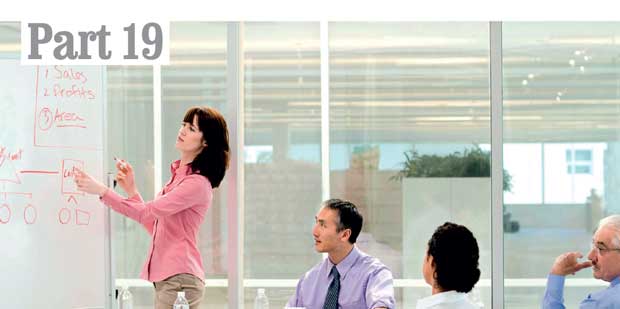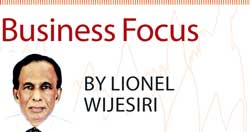04 Sep 2017 - {{hitsCtrl.values.hits}}

 One of my clients – a leader of a medium-sized growing company – was emotionally agitated about the future of his company. I allowed him a little time to vent his anxiety and then I reminded him how great leaders look at the future, how they create a vision and values and how they create targets based on where they’re going.
One of my clients – a leader of a medium-sized growing company – was emotionally agitated about the future of his company. I allowed him a little time to vent his anxiety and then I reminded him how great leaders look at the future, how they create a vision and values and how they create targets based on where they’re going.
But when times are tough, I told him, a great leader takes out from the vault a gift given to him: the gift of being present.
The uncertainty of his current situation meant he could actually take the time to slow down and pay more attention to the present moment and the things he needed to do – helping him make better decisions that would, in turn, have a good effect on his future.
I said: “Being present in the moment does not mean you act without direction in the future. The gift of being present requires intention and practice to carry out new action for the future.”
Being present
If you too are a hard-working leader, life is sometimes overshadowed by challenging events. My advice is – pause and pay deep attention to what is happening in the given moment. Be a witness:
Do not allow your thoughts to stray but instead learn to focus completely on what you are feeling in the moment. Focus and concentrate on getting things done one thing at a time.
It can be hard in stressful times but try to remain calm through the storm. Things might feel overwhelming but do not worry – this feeling eventually will pass.
Take the time to make things better by being reflective and responsive instead of reactive and resentful. You can do better.
Block all the noise out and zoom in on who you are being. Zoom in. Being present will award you the gift of ‘feeling’.
The worst thing you can do is think you are alone in this world. Get help, hire a coach, speak to a trusted advisor and invite others to join you on making every moment of today matter.
Quite often, when times are challenging, we spend our time thinking about the past or future. There’s no magic pill to make the economy turn around, to make business be more lucrative, to bring back customers or valuable team members who are gone.
Remember, being present is not just an idea, a mood, a thought: It’s an awareness that is rich with learning.
Mindfulness
Mindfulness has currently taken centre stage personally and professionally for many of us. Studies indicate that practicing mindfulness results in better sleep, which increases health benefits and well-being. Corporations such as Google, Target and General Mills are even offering mindfulness training to their employees.
Mindfulness essentially means moment-to-moment awareness. Although it originated in the Buddhist tradition, you don’t have to be Buddhist to reap its benefits. This description explains the basic philosophy:
When you are mindful, you become keenly aware of yourself and your surroundings but you simply observe these things as they are. You are aware of your own thoughts and feelings but you do not react to them in the way that you would if you were on ‘autopilot’, by not labelling or judging the events and circumstances taking place around you.
Try these simple exercises:
1. Give yourself some credit
This first credo is what Kim Nicol, a mindfulness expert to Fortune 500 executives, says her students resonate with the most. You are your own worst critic, so allowing time for gratitude can be difficult amid a jam-packed schedule of team meetings, business pitches and networking events but it should be a priority. Make a list of your accomplishments last three days – including little things like not hitting the snooze button for once – and your mind-set will instantly shift back into a positive place.
2. Create a ‘to-be’ list
This is not a to-do list. Halfway through the day, pause and take a minute to ask, “How am I being right now?” Curt or understanding? Defensive or open-minded? You may even find you’re engaging others and forming deeper relationships by being curious and intentional. Make your ‘to-be’ list into a goal – and try to maintain it as a discreet post-it on your desk to keep your intentions in check. Bonus: Writing the note by hand is a physical cue that adds positive reinforcement.
3. Get physical with body language
Breathing is second nature but mindful breathing requires more attention. Sitting with your feet on the floor, close your eyes and place one hand on your chest and the other on your belly. Then inhale for four counts, exhale for four counts and repeat. When the space your body takes up has true presence, there are physiological effects. For example, Amy Cuddy’s famous power pose communicates confidence to those around you but also influences your mind in a positive way. You can view it by clicking this link:
https://www.ted.com/talks/amy_cuddy_your_body_language_shapes_who_you_are?language=en
By physically holding onto your body as it inhales and exhales, you’re syncing your mind and body to be one.
4. Put on your favourite pants.
Here, this exercise allows you to focus on the present moment with all five senses. Place your palms face-down on your thighs, breathe in and rub your pants in one direction, then the other, feeling the texture and grain of the fabric. Then, concentrate on any sounds (birds, cars passing by, etc.) for three minutes while continuing to focus on how the pants feel. Sounds weird, we know, but it works.
5. Take 20 minutes to brainstorm digital-free
Develop your ‘attention’ muscle by taking at least 20 minutes away from your work devices and gathering your team members for a brainstorm meeting. Bring post-it notes and encourage them to leave their phones at their desks. Given a strategy or issue at hand, allow everyone five minutes to write down their first ideas on the post-its and place them on the wall. Repeat as needed. With a limited window of time and a bit of friendly competition, unique ideas will thrive. Health experts encourage frequent digital detoxes for increased productivity: twenty minutes is the ideal amount of time to restore the brain functions to make room for innovation. Free from digital distractions, teams are forced to collaborate to solve problems while creating personal bonds.
Other experiences
A great number of well-known companies have implemented mindfulness programmes for its employees.
Silicon Valley leaders go through some contemplative practices in action. Those who complete the study sessions tend to integrate what they learned into their busy lives in the following way:
Anchor my day with a contemplative morning practice (e.g., Breath, Zen, Buddhist or Hindu meditation, etc.),
Before entering the workplace, remind myself of my organisation’s purpose and recommit to my vocation as a leader,
Throughout the day, pause to be fully present in the moment before undertaking the next critical task,
Review the day’s events at the close of the day to prevent work stresses from spilling into your home life,
Before going to bed, engage in some spiritual reading.
Mindfulness at Google
Google deserves special mention. They introduced a programme to increase emotional intelligence using mindfulness -- and backed by scientific research. It’s called Search Inside Yourself. The programme works in three steps: Attention training, self-knowledge and self-mastery and creating useful mental habits
Attention training: The idea is to train attention to create a quality of mind that is calm and clear at the same time. That quality of mind forms the foundation for emotional intelligence. Mindfulness exercises are used extensively.
Self-knowledge and self-mastery: Use your trained attention to create high-resolution perception into your own cognitive and emotive processes. With that, you become able to observe your thought stream and the process of emotion with high clarity.
Creating useful mental habits: Imagine whenever you meet anybody, your habitual, instinctive first thought is, I wish for this person to be happy. Having such habits changes everything at work because this sincere goodwill is picked up unconsciously by others.
(Lionel Wijesiri is a retired corporate director counting three decades of senior management experience. He is now an independent consultant and a freelance journalist. He may be contacted on [email protected])
06 Jan 2025 48 minute ago
06 Jan 2025 2 hours ago
06 Jan 2025 2 hours ago
06 Jan 2025 2 hours ago
06 Jan 2025 2 hours ago